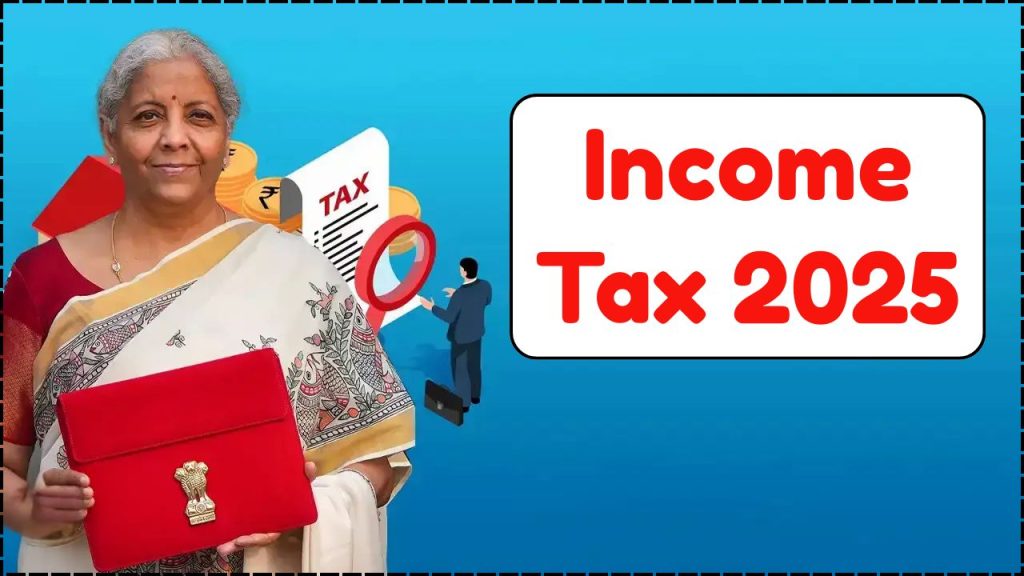
As we step into the new financial year, the Indian government has introduced significant changes to the income tax structure through Budget 2025. These modifications promise substantial relief to taxpayers across different income brackets, particularly benefiting the middle class and salaried employees. Understanding these changes is crucial for effective financial planning and maximizing your tax savings.
Revolutionary Changes in Tax Structure
The most significant announcement from Budget 2025 is the dramatic expansion of tax-free income. Under the revised new tax regime, individuals earning up to Rs 12 lakh annually will be exempt from paying taxes, with salaried workers eligible for an additional standard deduction of Rs 75,000, effectively making salary income up to Rs 12.75 lakh tax-free.
This represents a massive shift from previous years and addresses long-standing demands from the middle class for meaningful tax relief. The government has achieved this through a combination of revised tax slabs, enhanced rebates, and improved standard deductions.
New Tax Slabs for Financial Year 2025-26
The government has completely restructured the tax slabs under the new regime to provide maximum benefit to taxpayers. Here’s how the new structure looks:
Income Tax Slabs – New Regime (FY 2025-26)
| Income Range | Tax Rate |
|---|---|
| Up to Rs 4 lakh | Nil (0%) |
| Rs 4 lakh – Rs 8 lakh | 5% |
| Rs 8 lakh – Rs 12 lakh | 10% |
| Rs 12 lakh – Rs 16 lakh | 15% |
| Rs 16 lakh – Rs 20 lakh | 20% |
| Rs 20 lakh – Rs 24 lakh | 25% |
| Above Rs 24 lakh | 30% |
Income Tax Slabs – Old Regime (FY 2025-26)
The old regime remains unchanged and continues to offer various deductions and exemptions:
| Income Range | Tax Rate |
|---|---|
| Up to Rs 2.5 lakh | Nil (0%) |
| Rs 2.5 lakh – Rs 5 lakh | 5% |
| Rs 5 lakh – Rs 10 lakh | 20% |
| Above Rs 10 lakh | 30% |
Note: Senior citizens (60-80 years) get basic exemption up to Rs 3 lakh, and super senior citizens (above 80) get exemption up to Rs 5 lakh in the old regime.
Enhanced Rebate Provisions
One of the most impactful changes is the substantial increase in rebate under Section 87A. The rebate for taxpayers filing returns under the new tax regime has been increased to Rs 60,000 from the previous limit of Rs 25,000, while the rebate for the old tax regime remains at Rs 12,500.
Rebate Comparison
| Tax Regime | Previous Rebate | New Rebate | Effective Tax-Free Income |
|---|---|---|---|
| New Regime | Rs 25,000 | Rs 60,000 | Up to Rs 12 lakh |
| Old Regime | Rs 12,500 | Rs 12,500 | Up to Rs 7 lakh |
Standard Deduction Benefits
The standard deduction remains at Rs 75,000 for salaried employees under the new tax regime, which was increased from Rs 50,000 in the previous budget. This means salaried individuals can effectively earn up to Rs 12.75 lakh without paying any income tax.
Who Benefits from the Standard Deduction?
- Salaried Employees: Automatic deduction of Rs 75,000
- Pensioners: Family pension deduction increased from Rs 15,000 to Rs 25,000
- Senior Citizens: Additional benefits for interest income taxation
TDS and TCS Changes
The government has simplified the TDS (Tax Deducted at Source) structure to reduce the compliance burden:
Key TDS Changes for 2025
| Category | Previous Limit | New Limit |
|---|---|---|
| Interest Income (General) | Rs 40,000 | Rs 50,000 |
| Interest Income (Senior Citizens) | Rs 50,000 | Rs 1 lakh |
| Rent (Monthly) | Rs 20,000 | Rs 50,000 |
| LRS Remittances | Rs 7 lakh | Rs 10 lakh |
These changes mean there will be no TDS on interest income up to Rs 1 lakh for senior citizens and up to Rs 50,000 for general citizens under section 194A.
Special Provisions for Different Categories
For Senior Citizens
Senior citizens receive enhanced benefits in the new tax structure:
- Interest Income: TDS threshold doubled to Rs 1 lakh
- Medical Insurance: Higher deduction limits
- Family Pension: Increased deduction from Rs 15,000 to Rs 25,000
For Startups and Entrepreneurs
Startups incorporated before April 1, 2030, will be allowed a 100% deduction of profits and gains for three consecutive years out of ten years from the year of incorporation. This significant incentive aims to boost entrepreneurship and innovation in the country.
For Property Owners
The Finance Bill 2025 allows individuals to declare up to two house properties as self-occupied with a NIL income condition, regardless of occupation reasons, offering increased flexibility for taxpayers owning multiple properties.
Choosing Between Old and New Regimes
The decision between the old and new regimes depends on your income level and available deductions:
When to Choose a New Regime:
- Annual income up to Rs 12 lakh (completely tax-free)
- Limited investments in tax-saving instruments
- Preference for simpler tax calculation
- Salaried employees with minimal deductions
When to Choose Old Regime:
- Significant investments in Section 80C instruments (PPF, ELSS, Life Insurance)
- Home loan interest payments
- Multiple tax-saving investments and expenses
- Higher income with substantial deductions
Impact on Different Income Groups
Lower Middle Class (Rs 3-7 lakh)
- Complete tax exemption under the new regime
- Significant savings compared to previous years
- Enhanced purchasing power and disposable income
Middle Class (Rs 7-15 lakh)
- Substantial tax reduction through new slabs
- Up to Rs 17,500 savings for those in the Rs 12-15 lakh bracket
- Better work-life balance with reduced tax burden
Upper Middle Class (Rs 15-25 lakh)
- Moderate tax savings through revised slab structure
- Need to evaluate regime choice based on available deductions
- Opportunity for better financial planning
Filing and Compliance Changes
Extended Deadlines
The Union Budget extends the timeline for filing an Updated Tax Return (ITR-U) from 12 months to 48 months past the relevant assessment year, allowing taxpayers a more extended period to comply with tax obligations.
Simplified Processes
- Removal of sections 206AB and 206CCA to reduce compliance burden
- Streamlined TDS rates and thresholds
- Clearer guidelines for various deductions
Long-term Financial Planning Implications
The new tax structure encourages several behavioral changes:
Increased Savings Potential
With more money in hand, individuals can:
- Invest in market-linked instruments
- Build emergency funds
- Plan for major life goals
Consumption Boost
- Higher disposable income leads to increased spending
- Potential economic stimulus through enhanced consumption
- Better standard of living for middle-class families
Investment Strategy Revision
- Re-evaluate the need for tax-saving investments
- Focus on growth-oriented investments rather than just tax savings
- Consider diversification beyond traditional tax-saving instruments
Key Takeaways for Taxpayers
- Immediate Relief: Those earning up to Rs 12 lakh get complete tax exemption under the new regime
- Simplified Structure: Fewer tax slabs make calculation easier and more transparent
- Enhanced Benefits: Senior citizens and salaried employees get additional advantages
- Strategic Planning: Choose a regime based on your specific financial situation
- Future Security: Use tax savings for long-term wealth creation
Final Thoughts
The Income Tax changes for 2025 represent the most significant reform in recent years, delivering on the government’s promise of providing relief to the middle class. With no income tax on average monthly income of up to Rs 1 lakh, the changes are designed to boost middle-class household savings and stimulate economic growth.
For taxpayers, this is an opportune time to reassess their financial strategies, understand the new provisions, and make informed decisions about tax regime selection. The enhanced tax-free income threshold, coupled with simplified compliance requirements, creates a more taxpayer-friendly environment that promotes savings, investment, and economic participation.
As you plan your finances for the coming year, consider consulting with a tax advisor to maximize the benefits of these new provisions while ensuring full compliance with the updated regulations. The goal is not just to save taxes but to build a robust financial foundation that serves your long-term objectives.
Remember: Tax laws can be complex, and individual circumstances vary. Always consult with a qualified tax professional for personalized advice.

Katherine Johnson is a passionate writer with a keen interest in storytelling, content creation, and creative expression. She enjoys exploring diverse topics and crafting engaging narratives that captivate readers.



